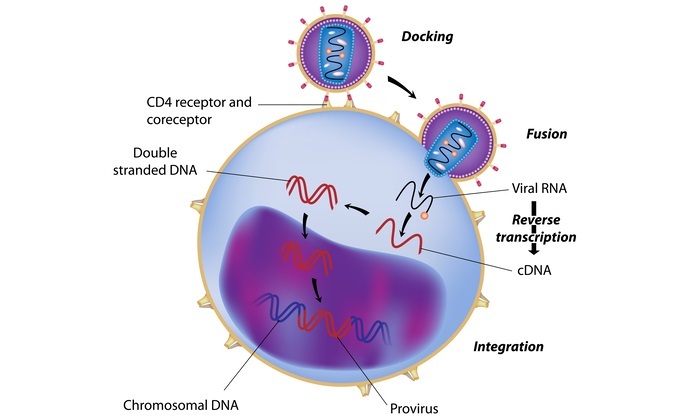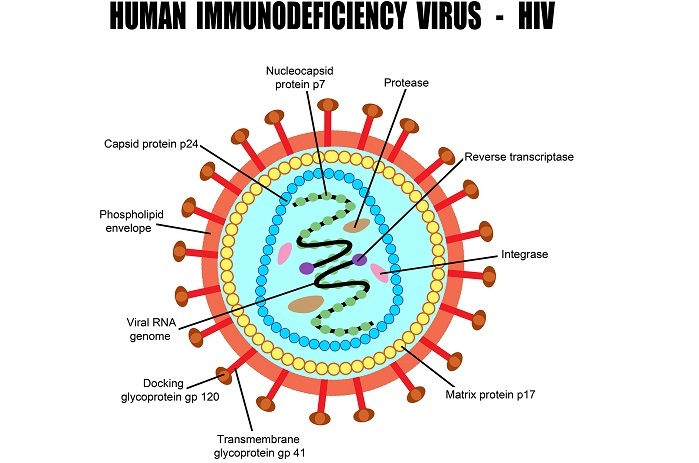
 Data Structure
Data Structure Networking
Networking RDBMS
RDBMS Operating System
Operating System Java
Java MS Excel
MS Excel iOS
iOS HTML
HTML CSS
CSS Android
Android Python
Python C Programming
C Programming C++
C++ C#
C# MongoDB
MongoDB MySQL
MySQL Javascript
Javascript PHP
PHP
- Selected Reading
- UPSC IAS Exams Notes
- Developer's Best Practices
- Questions and Answers
- Effective Resume Writing
- HR Interview Questions
- Computer Glossary
- Who is Who
Reverse Transcriptase: Structure and Applications
Get to Know Reverse Transcriptase
Reverse transcriptase is an RNA-dependent DNA polymerase that is capable of synthesizing a complementary DNA strand from an RNA template. The enzyme was first discovered in retroviruses, which are RNA viruses that use reverse transcriptase to convert their RNA genomes into DNA.
Reverse transcriptase is also found in other retrotransposons, and telomerase, which are involved in maintaining the length of the chromosome ends.

Structure
Reverse transcriptase is a multifunctional enzyme that consists of two domains ?
An RNA-dependent DNA polymerase domain and
A ribonuclease H (RNase H) domain.
The polymerase domain catalyzes the synthesis of DNA from an RNA template, while the RNase H domain cleaves the RNA strand of an RNA-DNA hybrid, which is formed during the DNA synthesis process.
The structure of reverse transcriptase is complex and has been extensively studied using X-ray crystallography and cryo-electron microscopy.
The polymerase domain consists of -
An N-terminal thumb domain,
A palm domain, and
A C-terminal finger domain.
The RNase H domain is located at the C-terminus and is connected to the polymerase domain by a flexible linker.
Application
A few of the applications are as follows ?
Reverse transcriptase has several applications in molecular biology, particularly in the field of gene expression analysis.
One of the most significant applications is in reverse transcription PCR (RT-PCR), which is used to quantify gene expression.
Reverse transcriptase can be used to convert mRNA into cDNA, which can then be amplified using PCR and quantified using various techniques.
This technique is widely used in gene expression analysis, particularly in cancer research.
Examples in Gene Expression Analysis
-
Quantifying gene expression: RT-PCR is commonly used to quantify gene expression in various types of tissues and cells.
For example, researchers might use RT-PCR to compare the expression of a particular gene in normal and cancerous tissues. In this case, mRNA is isolated from both types of tissues and reverse transcribed to cDNA using reverse transcriptase.

The resulting cDNA is then used as a template for PCR amplification, and the amount of amplified product is quantified using techniques such as gel electrophoresis or real-time PCR. This allows researchers to compare the expression of a particular gene between different tissues or cell types.
-
Detecting viral infections: Reverse transcriptase can also be used to detect the presence of viral infections.
For example, researchers might use RT-PCR to detect the presence of HIV in blood samples. In this case, viral RNA is isolated from the blood sample and reverse transcribed to cDNA using reverse transcriptase.
The resulting cDNA is then used as a template for PCR amplification, and the presence of an amplified product indicates the presence of the virus. This technique can be used to diagnose viral infections and monitor the progression of the disease.
Another important application of reverse transcriptase is in the development of antiviral drugs.
As retroviruses rely on reverse transcriptase to convert their RNA genome into DNA, inhibitors of reverse transcriptase can be used to prevent the replication of these viruses.

Drugs that target reverse transcriptase are widely used in the treatment of HIV, a retrovirus that causes AIDS.
Examples in Antiviral Drug Development
-
HIV treatment: Reverse transcriptase inhibitors are a class of drugs used to treat HIV infection.
These drugs target the reverse transcriptase enzyme in the virus, preventing it from converting viral RNA into DNA.
-
As a result, the virus cannot replicate and the progression of the disease is slowed.
Examples of reverse transcriptase inhibitors used in HIV treatment include zidovudine (AZT), lamivudine (3TC), and efavirenz (EFV).

-
Hepatitis B treatment: Reverse transcriptase inhibitors are also used to treat hepatitis B virus (HBV) infection.
HBV is a DNA virus that uses reverse transcriptase to convert its RNA intermediate into DNA, which can then be integrated into the host genome.
Reverse transcriptase inhibitors such as adefovir and tenofovir can prevent the replication of the virus by inhibiting this step.
These drugs are used in combination with other antiviral drugs to treat chronic HBV infection.
Where Is It Isolated from Its Structure?
Reverse transcriptase is isolated from a variety of sources, including retroviruses, retrotransposons, and telomerase. Retroviruses are RNA viruses that use reverse transcriptase to convert their RNA genomes into DNA, which can then be integrated into the host cell genome.
Retrotransposons are DNA elements that use reverse transcriptase to transpose themselves to new genomic locations, and telomerase is an enzyme that uses reverse transcriptase to maintain the length of chromosome ends.
Why Is It So Unique?
Reverse transcriptase is unique because it is an RNA-dependent DNA polymerase that can synthesize DNA from an RNA template, which is the opposite of the conventional flow of genetic information from DNA to RNA to protein.
This is in contrast to the DNA-dependent DNA polymerases that are used by most organisms for DNA replication and repair.
The ability of reverse transcriptase to synthesize DNA from RNA has important implications for the replication and evolution of retroviruses, which are RNA viruses that use reverse transcriptase to convert their RNA genomes into DNA.
This allows the retroviral DNA to be integrated into the host cell genome, where it can persist for long periods of time and be transmitted to future generations of cells.
Conclusion
In conclusion, reverse transcriptase is a unique enzyme that has played a significant role in the understanding of retroviruses and has numerous applications in molecular biology and biotechnology. The enzyme's ability to synthesize DNA from RNA has led to the development of new techniques for gene expression analysis, genetic engineering, and diagnostic tools.

